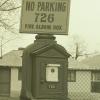Sign in to follow this
Followers
0

Fire Alarm Street boxes
Started by
spin_the_wheel,
-
Recently Browsing 0 members
No registered users viewing this page.

Started by
spin_the_wheel,
No registered users viewing this page.